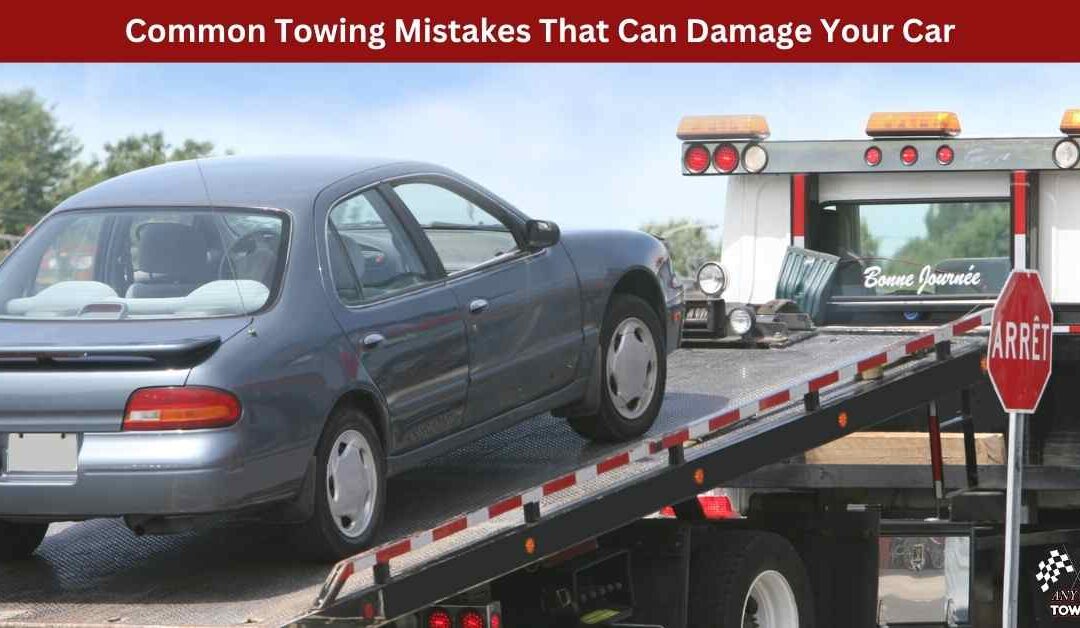Towing a car may seem like a simple process, but it involves a lot more than just hooking up a vehicle and pulling it away. Many drivers do not realise how easy it is for a small mistake to lead to major damage. Even experienced drivers sometimes overlook important steps when arranging a tow. Whether you’ve broken down unexpectedly or you need to move a vehicle from one place to another, knowing what can go wrong will help you protect your car from unnecessary harm. Below are some of the most common towing mistakes and why avoiding them is so important.
Using the Wrong Towing Equipment
One of the biggest issues that leads to vehicle damage is the use of incorrect towing equipment. Every car has a specific weight, size, and design, and not all equipment suits every vehicle. Using chains or straps that are too weak may cause them to snap under pressure. Using hooks or tow bars that are incompatible with your car can place stress on the frame or suspension. Cars with low ground clearance, larger four-wheel drives, and vehicles with modified body kits all require careful handling and proper tools. A professional towing operator will always choose the right equipment to prevent bending, scraping, or dragging parts of the vehicle.
Hooking to the Wrong Points on the Car
Modern vehicles have dedicated towing points designed to handle the force applied during a tow. However, many people mistakenly attach towing straps to bumpers, axles, or suspension components. These parts are not made to carry towing forces and can easily bend, break, or detach when pulled. Bumpers are especially vulnerable because they are mostly cosmetic and not structural. Hooking to the wrong area can also shift the vehicle’s alignment or cause long-term damage that becomes noticeable only later. Always make sure towing points are used correctly to keep the structure of your car intact.
Leaving the Parking Brake On
It is surprisingly common for drivers to forget to release the parking brake before a tow begins. If the handbrake remains engaged, the wheels cannot rotate freely. Attempting to move a car with the handbrake on can place extreme stress on the braking system, causing heat buildup, worn components, or even complete failure. This mistake also damages the tyres, as they drag across the ground instead of turning. Before any towing starts, double-check that the parking brake has been released to prevent avoidable damage.
Failing to Secure the Vehicle Properly
A car must be fully secured before it is moved, especially on a flatbed tow truck. If straps or clamps are loose, the car can shift during transit. Even small movements can scratch panels, break lights, or damage tyres. In more serious cases, the car may slide or tilt dangerously, creating a safety risk for both the driver and the towing operator. Properly securing a car involves tightening wheel straps, checking all connection points, and ensuring the vehicle remains stable during the entire journey. Skipping this step or doing it incorrectly is one of the most common causes of damage while towing.
Ignoring Transmission Type
Different vehicles need different towing methods. For example, many automatic cars cannot be towed with the driven wheels on the ground because the transmission requires lubrication that is only active when the engine is running. Pulling an automatic car incorrectly can overheat or destroy the transmission. All-wheel-drive vehicles need even more care, as towing them the wrong way can damage both the transmission and drivetrain. In many cases, a flatbed truck is the safest choice. Knowing the correct method based on your car’s transmission is essential for preventing expensive repairs.
Driving Too Fast While Towing
Speed plays a major role in safe towing. When a vehicle is being towed, it is less stable and more sensitive to sudden movements. Driving too fast increases the risk of swaying, fishtailing, or sudden braking issues. High speeds also place extra pressure on the tow truck’s brakes, suspension, and tyres. If the road surface is uneven or slippery, the risks become even higher. Safe, steady driving is the best way to protect both the tow truck and your vehicle from damage.
Not Checking Tyre Pressure Before Towing
Tyres support the entire weight of the vehicle, so proper tyre pressure is critical when towing. Under-inflated tyres can deform under load, causing uneven wear or sidewall damage. Over-inflated tyres are also risky because they may burst when exposed to bumps or pressure during transport. Checking tyre pressure takes only a minute, but it greatly reduces the chances of tyre-related damage during a tow.
Using Untrained or Unqualified Help
Not all towing operators have the necessary training or experience. Hiring someone with little knowledge of proper techniques can put your car at risk. An untrained person may use the wrong tools, secure the car poorly, or choose an unsafe towing method. Professional towing services follow strict procedures to ensure your vehicle remains safe from start to finish. Choosing qualified help is always better than trying to save a few dollars on a risky tow.
Why Avoiding These Mistakes Matters
Towing mistakes can lead to costly repairs, long-term mechanical problems, and unnecessary stress. Understanding the risks and choosing a professional towing service reduces the chance of damage and ensures your car is transported safely. A careful approach protects your vehicle, your wallet, and your peace of mind.
Now Any Car Towing is available in Narre Warren Victoria 3805.
Contact Us
Any Car Towing
10 Silvergum Pl, Cranbourne VIC 3977
0413 176 223


Recent Comments